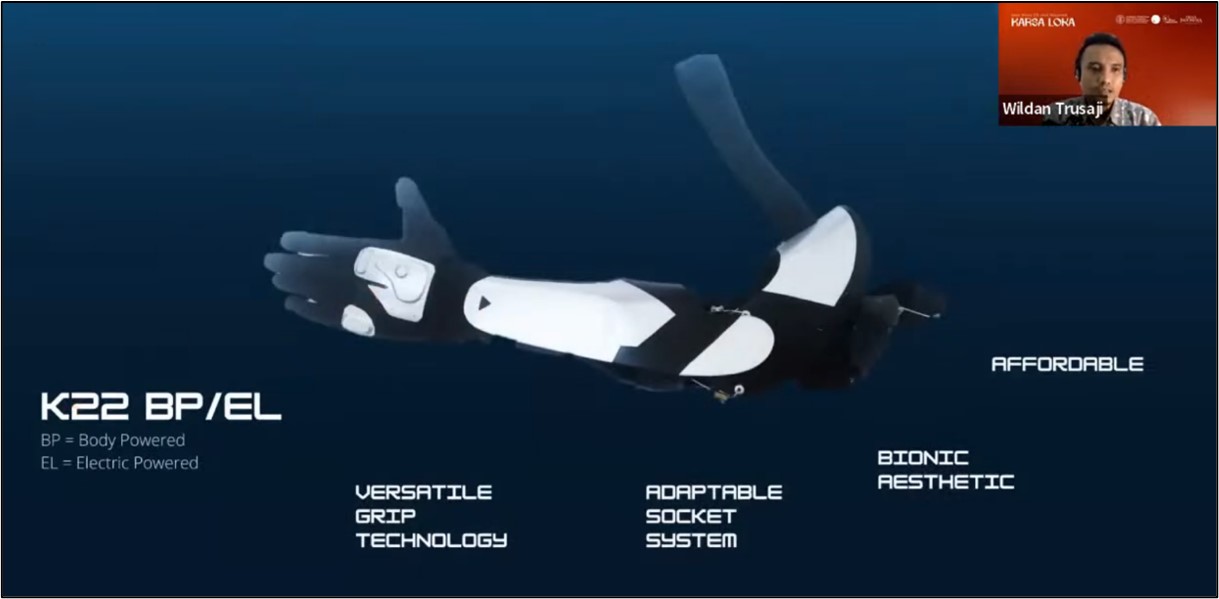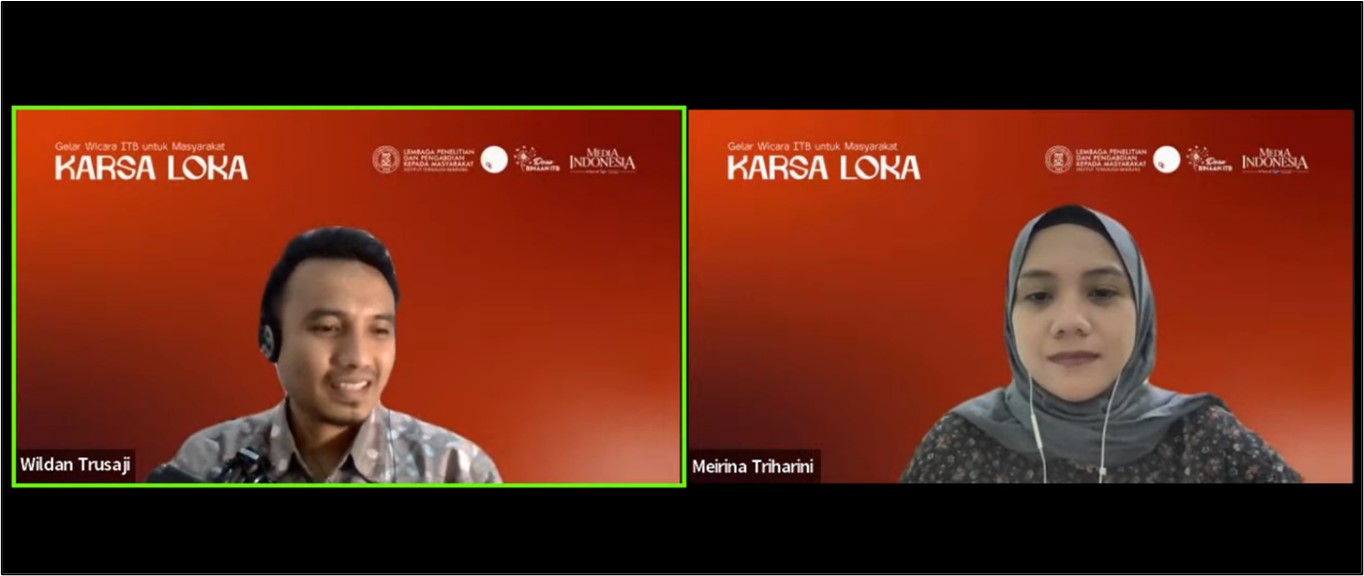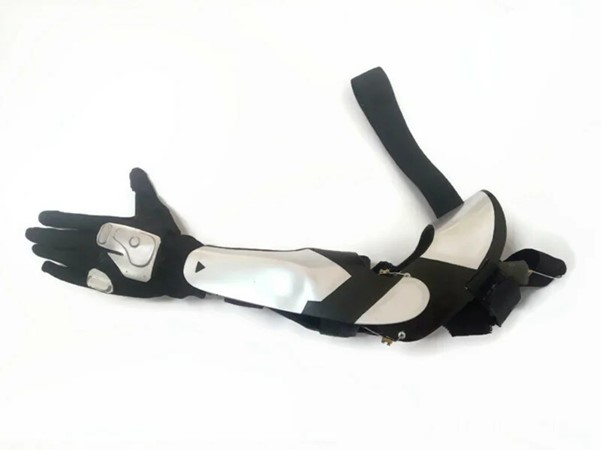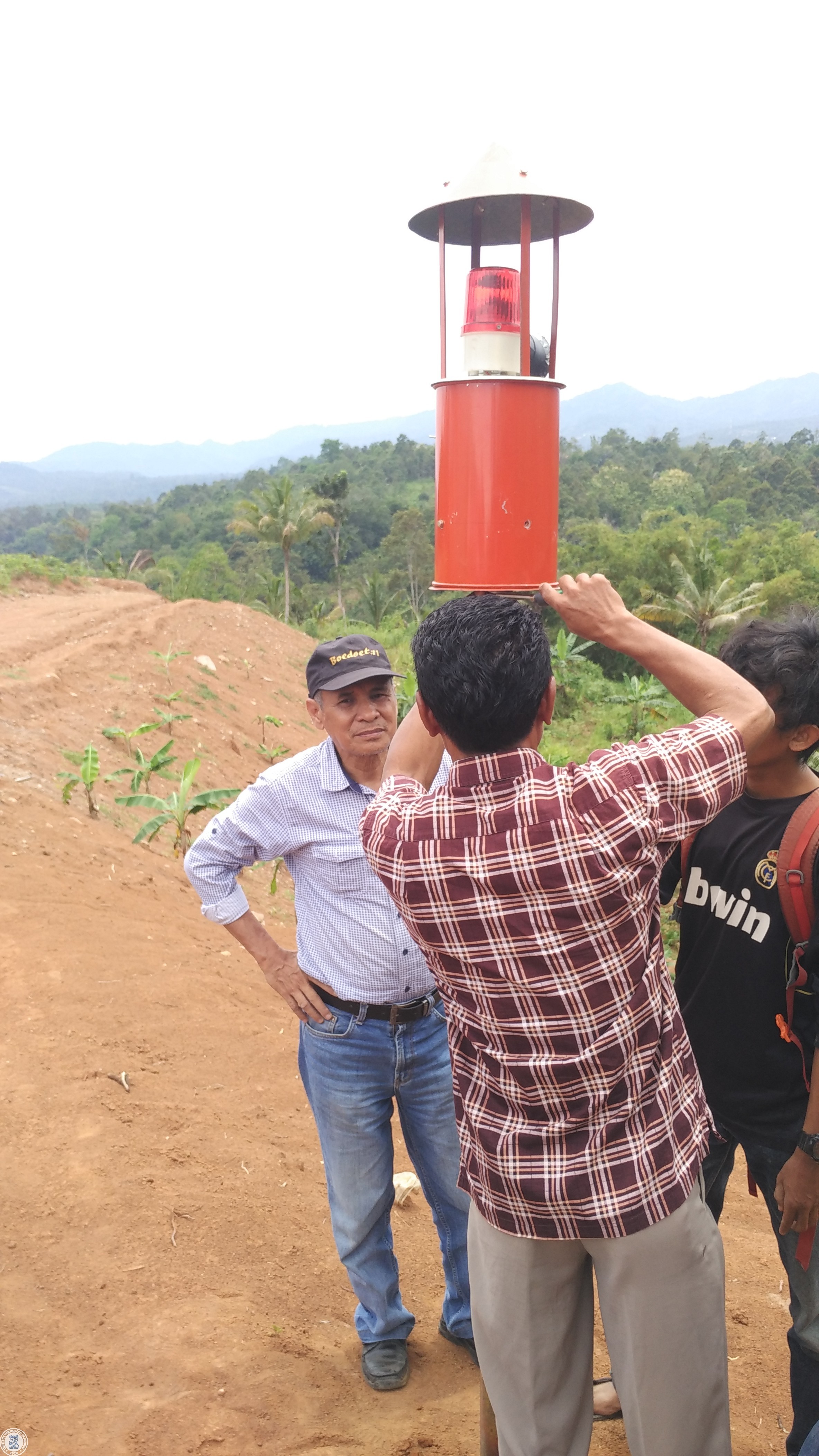Story Behind the Creation of a Bionic Arm by an ITB Lecturer
By Adi Permana
Editor Adi Permana

BANDUNG, itb.ac.id – Karsa Loka Vol. 019 that was held by the ITB Institute for Research and Community Service on Friday (22/7/2022) took upon an interesting theme; “Making Mistake and Asking is Our Path to Develop Affordable Bionic Arm”.
This theme is an overview of how an ITB team succeeded in developing a prosthetic arm. Wildan Trusaji, S.T., M.T., a lecturer and a researcher from ITB, has dedicated himself to researching and engineering a prosthetic arm. Together with his team he never stops developing his prosthetic arm prototype to be more versatile and affordable for all classes of people with special needs. Its development process consists of two main aspects: theory and practice.
"Theory sometimes contradicts the practice because theory is more focused on the generalization while practice focuses on the application," said Wildan during his presentation in the Karsa Loka Vol 019 which was held in cooperation with the Ethnography Design Lab Faculty of Fine Arts and Design ITB and was supported by Media Indonesia as the media partner. This event was moderated by Meirina Triharini, Ph.D., a lecturer from the Human and Industrial Product Design Research Group Faculty of Fine Arts and Design ITB. This webinar was broadcasted via Zoom and ITB YouTube channel.

Wildan himself is a lecturer from the Manufacturing System Research Group Faculty of Industrial Technology ITB. His bionic arm invention was named K22 BP/EL, the K22 itself is an alias of its creator Karla Bionics while the 22 shows the year when it was launched and BP/EL is an abbreviation of body-powered/electric powered. This bionic arm features and patent are categorized as versatile group technology for its gripping style, a socket system that can easily adapt to its user connection, bionic concept aesthetic style, and affordable with its less than 10 million IDR price.

The research team of this prosthetic arm participated in a Cybathlon competition last May. In that competition, which was held at ETH Zurich, Wildan said that one of the qualifications is moving eight small objects in under three minutes, and the Karla Bionics team managed to score a time of 2 minutes 54 second with the arm piloted by Yayat Supriyatna. “To be honest we only participated in this competition out of curiosity in addition to wanting to learn, thankfully we managed to perform well,” he said.
The Path to Creating a Bionic Arm
Karla Bionics' path started in 2018-2019 when Syaiful Hammam was writing his thesis under the supervision of Andar Bagus, Ph.D. During that period, Wildan met with Syaiful and Yayat to collaborate on designing a prosthetic arm. After they received funding from the Community Service Program P2MI Faculty of Industrial Technology IRCS ITB. They then founded Karla Bionics in 2022 and received further funding from the Institute for Innovation Development and Entrepreneurship ITB Start-Up Funding Program. By now, there are five students who are working at Karla Bionics: Kevin Hendra (EM), Alfa Tazlia (EM), Andy Lucky (EE), Ahmad Risyad G.T. (ME), and Hilmy Ilham (ME).
One of the prominent features of the Karla Bionics prosthetic arm is its affordable price, a BPJS insurance holder can purchase this product for only 2.5 million IDR, cheaper than most other passive/cosmetic prosthetic arms which are marketed at around 3 to 10 million IDR, and much lower compared to other body-powered or electric powered active prosthetic arms which can cost up to 200 million IDR. Karl Bionics chose resin as their bionic arm socket material and the components are custom-made for each user; these two reasons spiked up the production cost.
Because of those two issues, a solution that was proposed by Saiful is to apply a thermoforming principle, in which hot plastics will be pressed into a mold. After implementing this method, the production cost can be decreased. The Karla Bionics team used the PVC material to create their first prototype. To make their prosthetic arm looks cooler and has a robotic aesthetic, the Karl Bionics team glued carbon fiber stickers that are often sold as motorcycle stickers to the molded thermoform plastic.
Another advantage is that the materials that were chosen are light and durable. The prototype of this prosthetic arm can be operated with other body parts or more commonly known as body powered. Its mechanical movement is focused on a rope that is placed behind the user arm to allow the prosthetic arm to be controlled by his biological arm.
The Design Process
The design process of this prosthetic arm is divided into three parts: finger/gripping movements, finger adjustment mechanism, and socket. For the finger and gripping movements, its iteration took a lot of time to finally find a way of fast and low-cost manufacturing using 3D printing. Its finger adjusting mechanism was based on the WhippleTree mechanism which allows dividing the upward forces into multiple directions with only one biomimetics mechanism source. On the other hand, socket problems can be solved by using the sole-upper-lace principle.
From the user's point of view, Yayat admitted that this technology helps with his everyday activities, but also still has room for improvement. More specifically, this prosthetic arm still cannot completely replace a biological arm's functionality, however, aesthetically this prosthetic arm can make the user feel more confident. Therefore, Wildan then changed this prosthetic arm functionality from only a tool to become a functional fashion as well. These two features can help the user to accept reality and their condition.
"In the end, every arm is different, and this difference is not something that we need to hide, but something that we need to show as our strength," concluded Wildan.
Reporter: Hanifa Juliana (Urban and Regional Planning, 2020)
Translator: Favian Aldilla R (Civil Engineering, 2019)

.jpg)
.png)
.jpg)
.jpg)
.jpg)



